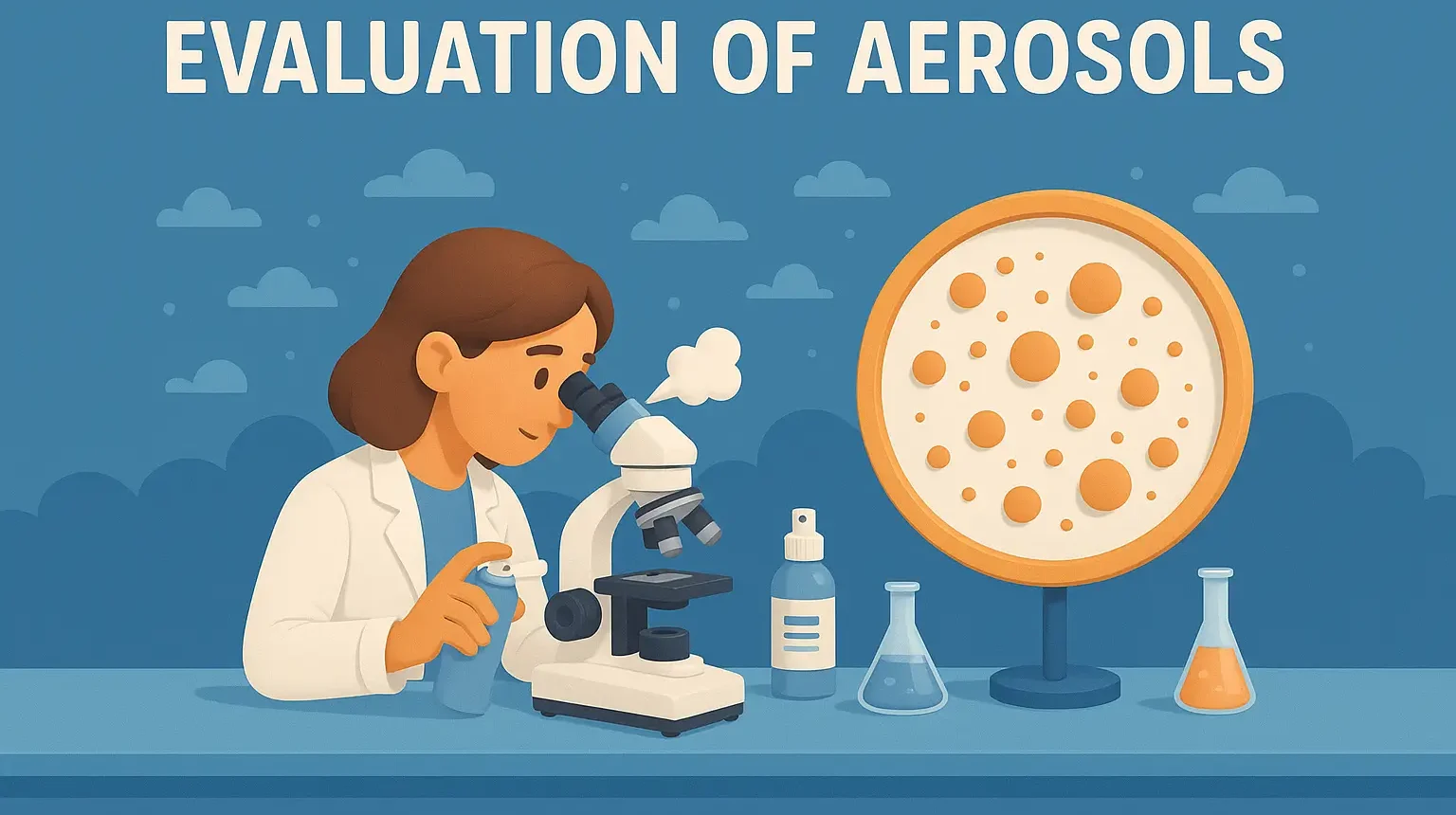- Evaluation of Aerosols involves assessing their physical stability, valve function, spray pattern, and particle size.
- Evaluation of Aerosols also ensures therapeutic efficacy, container integrity, and consistent dose delivery throughout use.
- Evaluating the performance and safety of aerosol products involves several important tests to make sure they work properly and are safe to use. Here’s a simple breakdown of each test.
-
Dose Uniformity Testing
- What it is: This test checks if each spray from the aerosol releases the same amount of product.
- How it’s done: We weigh the product before and after each spray or use special tests to analyze the amount dispensed.
-
Spray Pattern and Plume Geometry
- What it is: This test looks at how the aerosol spray spreads out to ensure it reaches the right target area.
- How it’s done: Techniques like laser beams or high-speed cameras are used to study how the spray spreads.
-
Particle Size Distribution
- Why it’s important: This test is especially important for products used in the lungs. The size of the particles affects how well the product will be absorbed in the lungs.
- How it’s done: Methods like cascade impaction or laser diffraction measure the size of the aerosol particles to ensure they are the right size for inhalation.
-
Leak Testing
- What it is: This test checks if the aerosol can holds its pressure properly and doesn’t leak, which could lead to contamination.
- How it’s done: Techniques like measuring pressure changes or using helium gas to check for leaks are used.
-
Valve Performance Testing
- What it is: This checks how well the valve works, ensuring it delivers the right amount of product each time and is durable.
- How it’s done: The valve is tested for consistency in the amount of spray it delivers, how easy it is to press, and its ability to work well after many uses.
-
Stability Testing
- What it is: This ensures that the product stays effective and safe over time, even under different conditions. (This test is also part of quality control and stability studies.)
-
Simulated Use
- What it is: This test mimics real-life use of the aerosol in different environments to see how it performs under normal and stressful conditions.
- How it’s done: The product is tested under conditions that simulate how it will be used in real life.
-
Microbiological Testing
- What it is: This test ensures that the product remains free from harmful germs, especially for inhalation products or those that need to be sterile.
- How it’s done: Special tests are conducted to make sure the product is free from microbial contamination during its shelf life.
- These tests together ensure that aerosol products are safe, effective, and ready for use.

